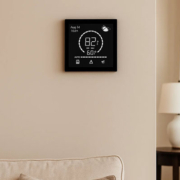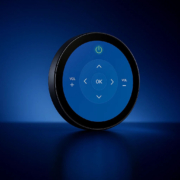Best Universal Touch Screen Solutions for Smart Home Dashboards – Expert Advice & Recommendations
As smart homes grow increasingly interconnected, homeowners and integrators are looking for centralized, reliable, and elegant interfaces to manage everything—from lighting and HVAC to security and entertainment. A universal touch screen smart home dashboard provides exactly that: a single, intuitive control point for the entire system.
But with so many choices available—ranging from tablets and proprietary panels to industrial controllers—how do you find the best universal solution that offers performance, compatibility, and aesthetic appeal?
This article offers expert insights and real-world recommendations to help you choose the ideal universal touch screen solution for your smart home.
Why a Universal Touch Screen Dashboard?
A universal smart home dashboard consolidates control of multiple devices and systems into a single screen. Instead of juggling phone apps or remotes, you get a clean, interactive interface that can be mounted on your wall for 24/7 accessibility.
Key Benefits Include:
- Device Consolidation: Control lights, thermostats, door locks, curtains, and scenes in one place.
- Improved User Experience: Larger, fixed interface with faster access than mobile apps.
- Scene Automation: Customize one-tap routines like “Good Night” or “Away Mode.”
- Elegant Aesthetics: Wall-mounted panels blend seamlessly into modern interiors.
Essential Features to Look For
When evaluating universal touch screen panels, consider the following:
1. System Compatibility
Look for solutions that work with popular ecosystems:
- Zigbee, Z-Wave, or Wi-Fi
- Alexa, Google Assistant, Apple HomeKit
- Support for Home Assistant, SmartThings, or openHAB
2. Operating System
- Android-based panels offer flexibility and app support.
- Embedded Linux or proprietary OS panels may offer better performance in closed systems but less customization.
Portworld’s Android-based smart panels provide an open platform for dashboard customization via apps like Home Assistant, Hubitat, or custom-built UIs.
3. Display Quality
- At least 4″ to 10″ capacitive touch screen
- High brightness for visibility in daylight
- Responsive, multi-touch input
4. Installation Options
- Flush or surface wall mount
- PoE (Power over Ethernet) for simplified cabling
- Retrofit compatibility with existing switch boxes
5. Build Quality & Design
- Premium materials (e.g., glass, aluminum)
- Minimalistic, modern appearance
- Durable for long-term daily use
Recommended Universal Touch Screen Solutions
Here are some top choices that combine functionality, elegance, and flexibility:
1. Portworld 5-Inch Smart Control Panel
- Android-based
- Zigbee & Wi-Fi support
- PoE-powered
- Customizable UI for Home Assistant, MQTT, or cloud dashboards
- Ideal for high-end homes and commercial buildings
2. Brilliant Smart Panel
- Touch screen with smart home integration
- Works with Alexa, Google Assistant
- Built-in voice control
- Limited to U.S. markets and select ecosystems
3. Touch Panels with Home Assistant + Wall Mount
- Use a dedicated Android touch screen (e.g., Portworld or similar)
- Load Home Assistant Dashboard (Lovelace) or SharpTools
- Offers complete freedom in layout and function
- Great for DIY and integrators
Avoiding Common Pitfalls
Many users make the mistake of:
- Using consumer tablets (short lifespan, charging issues, not designed for 24/7 use)
- Relying on phones (not accessible to guests or kids, inconsistent availability)
- Choosing closed systems that don’t support third-party integrations
Instead, invest in a dedicated touch screen panel built for 24/7 use, wall-mounting, and robust integration capabilities.







